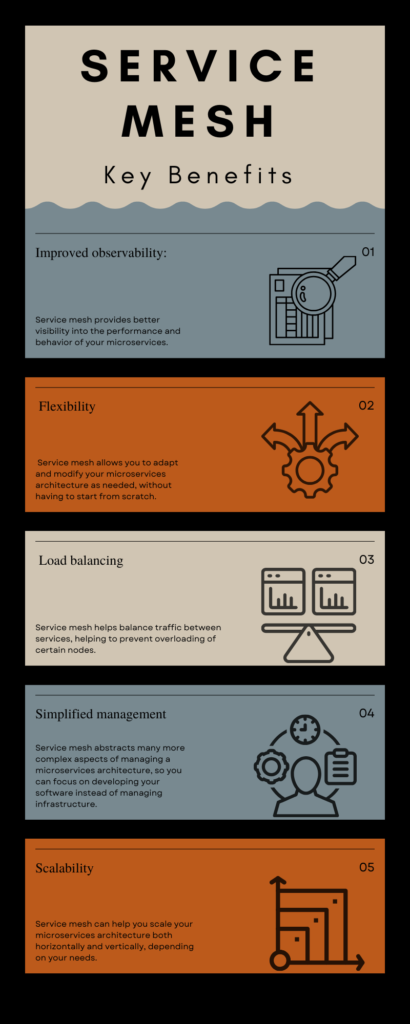Discover the fundamentals of service mesh and its role in managing microservices networking. Learn how service mesh technologies like Istio and Linkerd can simplify service-to-service communication, enhance observability, and improve resilience in your cloud-native architecture.
In today’s dynamic cloud-native landscape, microservices have become the go-to architecture for building scalable and agile applications. However, as microservices grow in number and complexity, managing their communication can become challenging. Enter service mesh—a powerful tool that simplifies service-to-service communication and enhances observability and resilience. In this blog post, we will dive into the fundamentals of service mesh and explore its role in managing microservices networking, with a focus on technologies like Istio and Linkerd.
Understanding Service Mesh:
Service mesh is a dedicated infrastructure layer that handles communication between microservices. It abstracts away the complexities of network communication from application code, allowing developers to focus on business logic without worrying about networking concerns. Service mesh provides features like service discovery, load balancing, traffic management, and security, enabling seamless and secure communication between microservices.

Key Benefits of Service Mesh:
- Service mesh simplifies service-to-service communication, abstracting away network details and making it easier for developers to deploy microservices.
- Enhanced Observability: Service mesh facilitates deep insights into the interactions between microservices. It provides observability features like distributed tracing, request/response metrics, and logging, enabling developers and operations teams to monitor and troubleshoot issues effectively.
- Improved Resilience and Fault Tolerance: Service mesh ensures that microservices are resilient to failures and can handle network disruptions. It provides features like circuit breaking and automatic retries, contributing to a more reliable and robust microservices architecture.
Service Mesh Technologies: Istio and Linkerd
- Istio: Istio is an open-source service mesh platform offering rich traffic management, security, and observability features. It integrates seamlessly with Kubernetes and other container orchestration systems, making it popular for managing microservices networking in cloud-native environments.
- Linkerd: Linkerd is another popular service mesh technology known for its lightweight and efficient design. It is specifically built for reliability and simplicity, making it an excellent choice for organizations seeking a less complex service mesh solution.
| Service mesh software | Git Contributions | Top Contributors | Reference link |
| Istio | ~500,000 | Google, IBM, Red Hat, Salesforce, VMware, Intel, SAP, NetApp, Microsoft, HP | Click here |
| Linkerd | 120,000 | Buoyant | Click here |
Conclusion:
Service mesh has emerged as a fundamental component for managing microservices networking in cloud-native architectures. By abstracting away network complexities, service mesh technologies like Istio and Linkerd simplify service-to-service communication, enhance observability, and improve resilience. As microservices continue to drive innovation and scalability, service mesh will ensure seamless and reliable communication between services.
Our next blog post will delve deeper into service mesh implementation, exploring practical steps to set up and manage service mesh technologies in a cloud-native environment.




